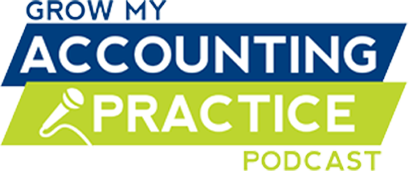My friend Allan Dib is one awesome marketer. His book, The 1-Page Marketing Plan, is teaching business owners how to market in milliseconds. Here’s some insight from one of the masters!
***********
You’re here because you want to become a marketing master. You know marketing is essential to your business success, but you’re unsure of the next steps.
You need a plan, and this is where a lot of entrepreneurs get stuck.
They agonize over getting their marketing plan perfect from Day 1. And so what happens? Nothing gets done.
They’re stuck in paralysis by analysis.
This is why I developed the one-page marketing plan. I wanted to give entrepreneurs a living document. Something practical and easy to update because marketing is an iterative process. It needs to be constantly optimized.
You’ll always be making changes. As you test and measure, you’ll get feedback, and through this process, you’ll find what works and what doesn’t.
So I want you to wrap your mind around getting it done as opposed to getting it perfect.
The next major barrier to completing the plan is people just don’t know where to start. I often get questions like, “What is the most important part? What should I focus on first?”
And while the entire plan is important, if I had to choose a specific section, I’d say get the before phase done.
If that’s the only thing you do, you need to be sure you’ve zeroed in on your niche audience, you’ve crafted a compelling message that connects, and you’re active on the right media.
So let’s dive into doing just that.
Step 1: Select Your Target Audience
Choosing your niche is the first crucial step in building your marketing plan. It forms the foundation for all of your marketing activities. Get it wrong, and it’ll have a knock-on effect for all other stages of your plan.
Now a lot of business owners resist niching down because they’re worried it limits them. So they’ll say things like, my target market is everyone.
But by saying your product or service is for everyone, you’re essentially targeting no one, and that’s a dangerous place to be.
Chances are, you have a limited budget. You’re not rolling in dollars. And you also have a finite time in which you need to start seeing a return on your investment.
If you target everyone, your message will be drowned out by bigger brands with bigger budgets.
Whereas, if you niche down, you can put all your firepower into marketing and providing a solution to a specific group of people—your people. But to do that, you need to know what’s going on in their heads so you can enter the conversation taking place in their mind. Here’s what I like to do.
Start with market research. What social platforms are they active on? What stresses them out? Where do they prefer to shop? Why do they buy, and why would they buy from you?
Can you answer these questions? If not, create a customer survey, or speak to a few of your best customers. Ask them why they love you? What do you do better than competitors? What media are they active on? What keeps them up at night? Read customer reviews, check out Google Analytics, and start getting into the mind of your customers.
Build a customer avatar. This is a clear picture of your ideal customer. These are the people you want to work with consistently. Again, it goes back to your best client and how you can attract more like them.
So your avatar would include their name, age, gender, education level, location, whether they’re single or married with kids, where they work if they’re religious or not, what their average day looks like, and their hopes and dreams, and struggles. Only through knowing this information can you genuinely help them.
Think through their buyer journey. This is something you need to care about. You need to understand what drives their decisions and who they turn to for advice? For example, do they look to influencers or online reviews? Do they have a built-in bias?
Once you’ve completed this step, you’ll have a good idea of what messaging to use: step 2 in your marketing plan.
Step 2: Craft Your Message
Unsurprisingly, messaging is key to your target audience noticing your brand and taking action. You can have an amazing message, but if it doesn’t resonate, it’s a wasted opportunity.
The only way to identify the right message is to test it. Survey your existing clients. Find out what they love about your product or service and why?
Then use their words in your marketing. Because I guarantee those are the words your target audience is typing into Google.
Another big part of messaging is an offer that converts.
One of the biggest mistakes entrepreneurs make is to sell from their ads. Don’t do it. Most prospects aren’t ready to buy today.
So how do you get them to ACT? Give them a compelling reason to barter their contact details and opt in to your newsletter, fill in a form or call you. It could be a free trial or a how-to guide, a discovery call, or some kind of framework.
But to your prospects, it’s valuable. So make sure you’re entering the conversation going on in their mind.
Lastly, you want to select the vehicle for your message: step 3 in your marketing plan.
Step 3: Choose Your Media
How are you going to reach your target audience effectively, efficiently, and cost-effectively?
So what will be the vehicle for your message?
Sure, you can jump onto TikTok or Facebook or invest in an expensive one-page advertisement in your favorite business magazine. But if your audience isn’t actively using these platforms, you’re wasting your time and money.
And at the end of the day, you want a return on investment.
If you’ve completed steps 1 and 2 of your plan, you’ll have a general idea of which media to target.
And don’t be afraid to mix it up. Putting all your eggs in one basket isn’t a good strategy, especially if you don’t own that media. For example, if you rely solely on LinkedIn to connect and engage with your audience, and they shut your account down, you’re in trouble.
Instead, use a combination of media like email marketing, your website, direct mail, SEO blogging, and at least one social media channel.
This way, you’re not beholden to one media.
To recap
If you’re stuck in paralysis by analysis, start with the first three steps of the 1-page marketing plan canvas. Don’t worry about getting it perfect. Instead, focus on getting it done.
Hone in on your target audience. Be clear about who that is and why they’d choose you over a competitor.
Choose a message that converts. Something that’ll get them to self-identify and act now.
And lastly, select which media you’ll use to attract and nurture your prospects. Then market to them until they buy or opt-out of your newsletter. Bye for now.
ABOUT ALLAN DIB Allan is the bestselling author of The 1-Page Marketing Plan (Amazon’s #1 Global Marketing book). A rebellious marketer and serial entrepreneur, Allan’s started, grown, and exited multiple multi-million dollar businesses in various industries. He’s made it his life’s work to provide clear and simple frameworks for marketing success, and he’s helped over 500,000 small businesses level up and achieve rapid business growth.










